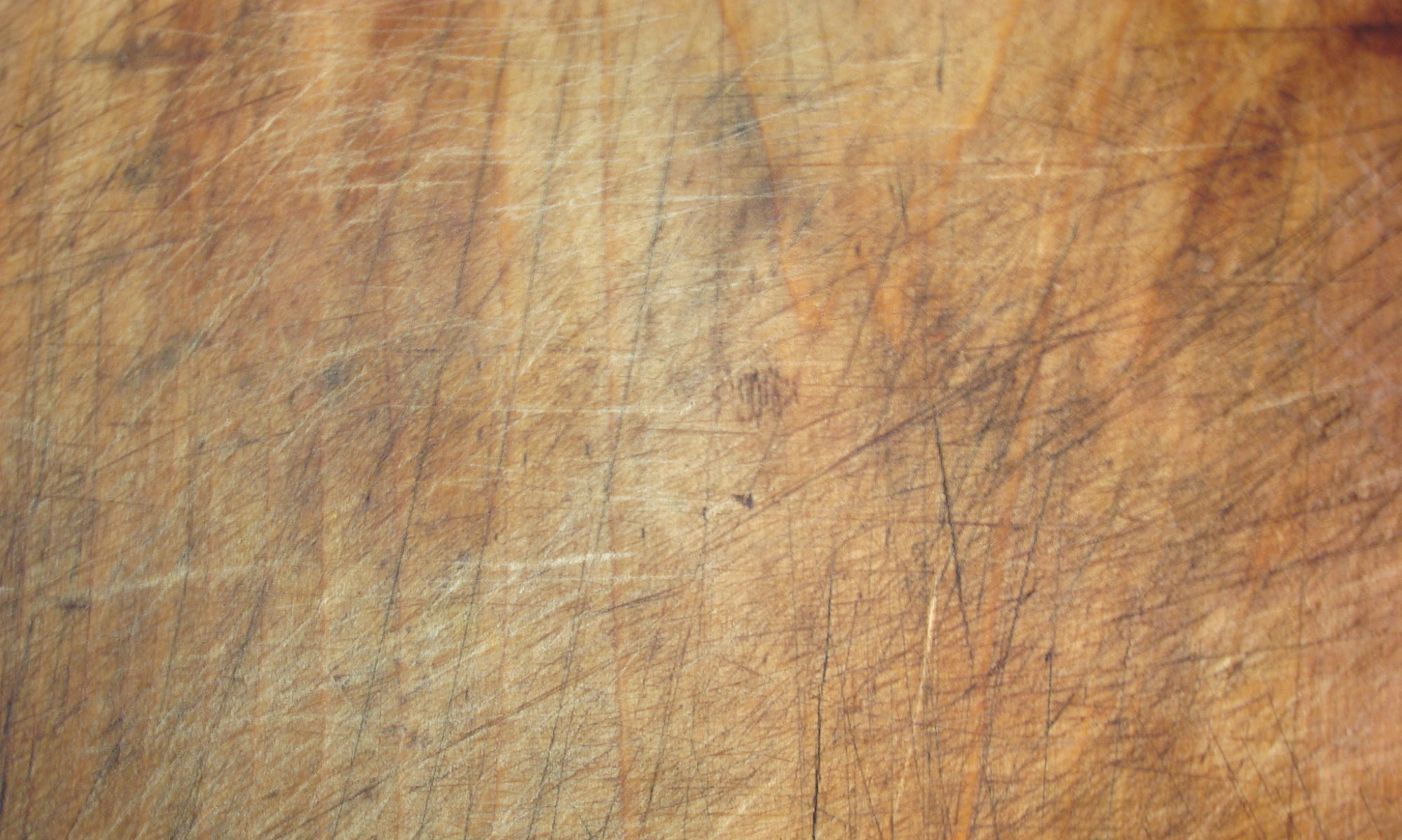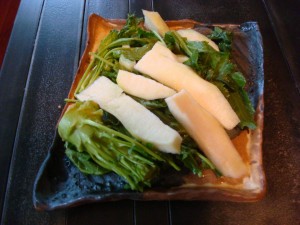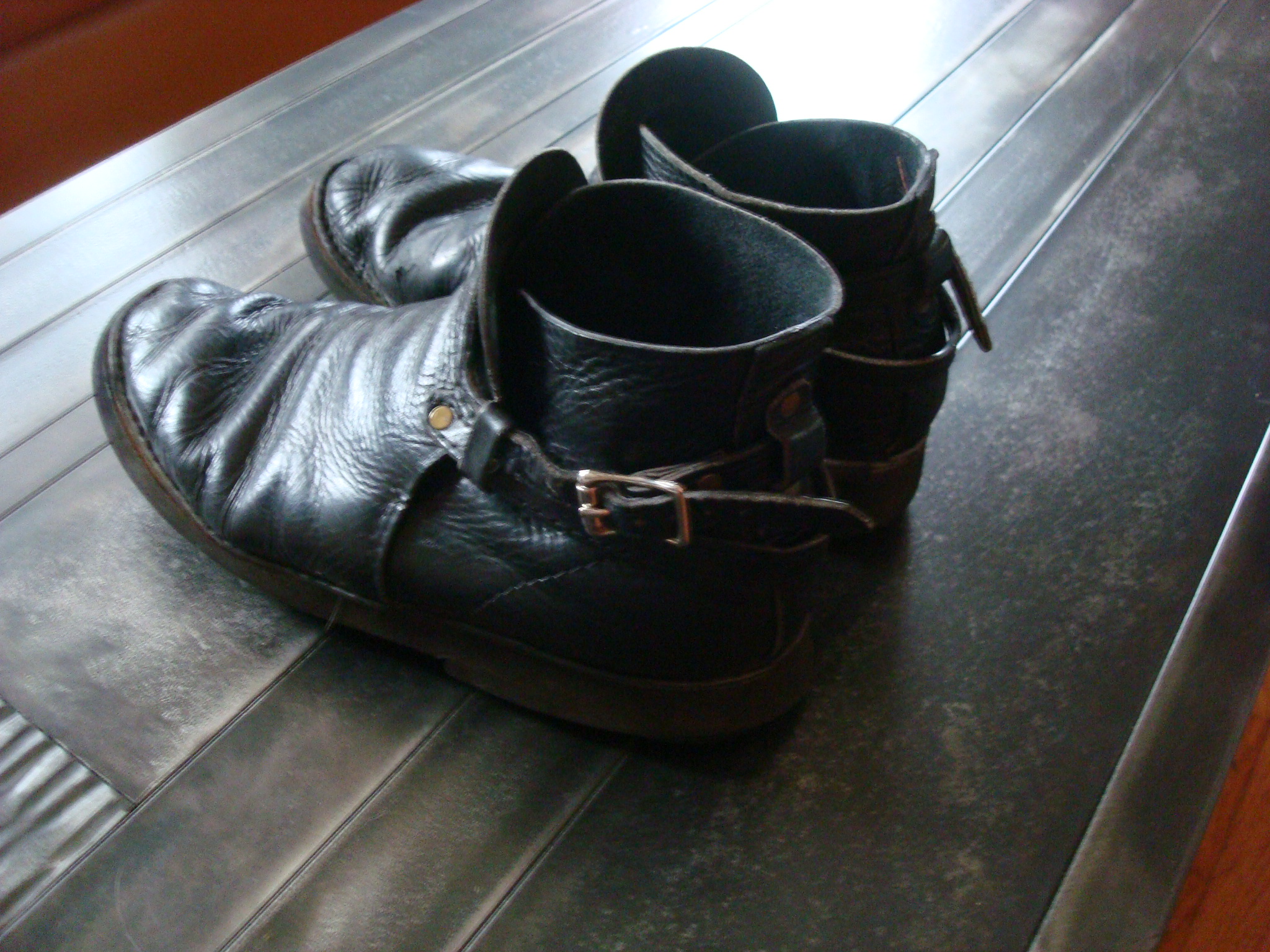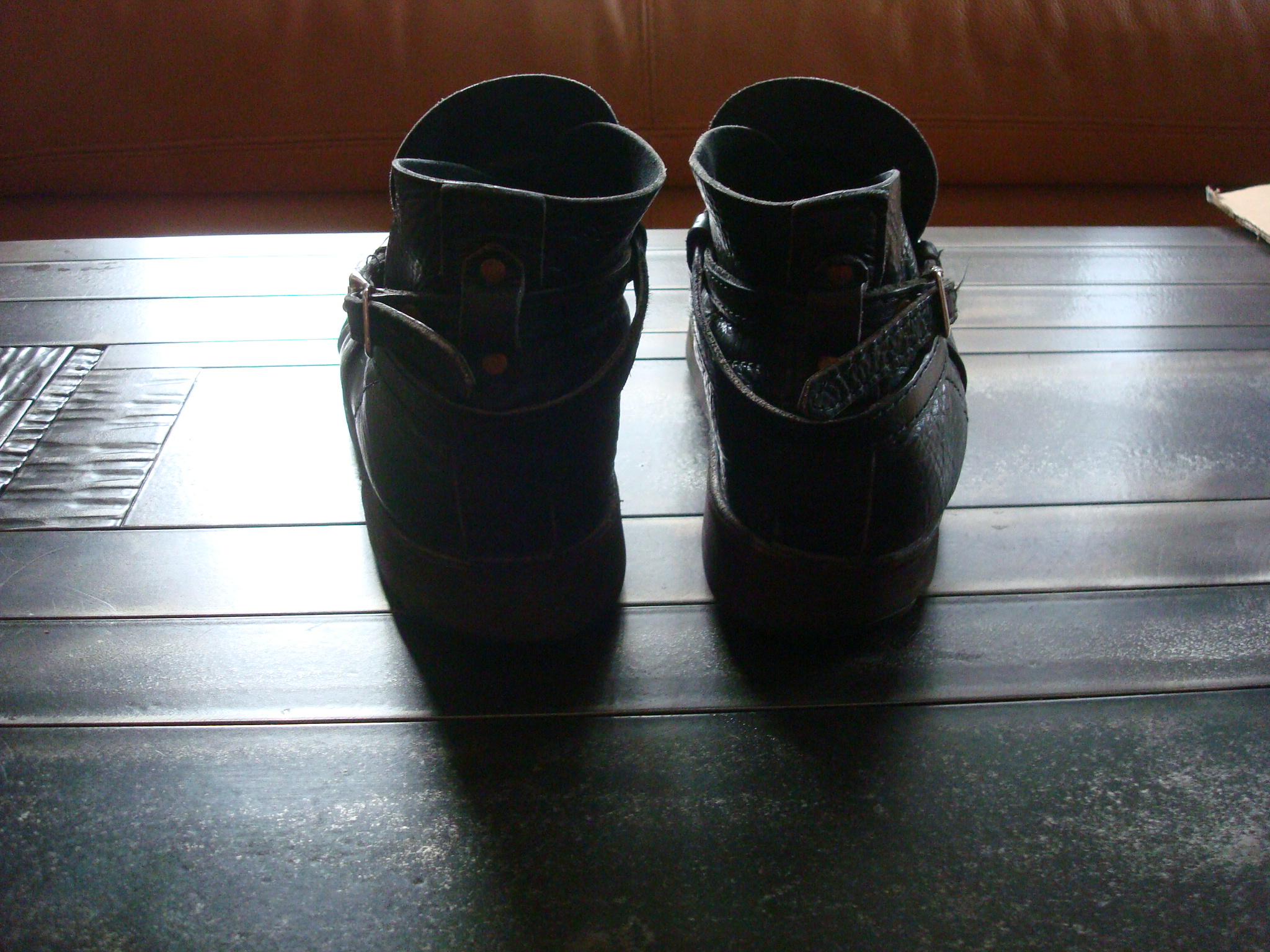There are some foods that are just too damn exciting, and not just to the palate. Nukazuke, rice bran pickles, fall into the “I wish I would have done this sooner” category. Not only are they crisp, their flavor is subtle, but with a complexity unique to each vegetable’s qualities. And, just as significant, the fermentation process for making them is very simple and downright entertaining. My own definition of what cures me is any activity or experience, which engages, vitalizes, and catalyzes healing. It might be hard to imagine that a traditional Japanese pickling process could elicit such fizz in me. But it does. I always pay attention when any food processing activity excites, or as my friend Danny says, gives me juice. We all know this…if what we do gives us energy then we must be on the right track.
I found out about nukazuke pickles in the most traditional way — from my neighbor, Stewart. He borrowed one of my most cherished books, The Art of Fermentation, by Sandor Ellix Katz, made a batch of the nukazuke pickles, and then gave me some samples. In due time, he offered me a lesson on how to ferment vegetables using this method. Because Stewart has spent significant time in Southeast Asia and had previously tasted these pickles at their source, he was drawn to making them.
Stewart warned me that recipes for making these pickles vary widely, but since it’s a no-fail kind of process, he advised doing my own research and experimenting since ingredients were cheap. That’s exactly what I did so the recipe that follows is a composite recipe based on The Art of Fermentation’s instructions, Stewart’s recommendations and my own google searches. I offer it as a guide, and like Stewart, encourage readers to try out their own versions, becoming their own resident authority on a method that they can share with neighbors. One reason I love live culture foods is they survive because they are passed from organism-to-organism, household-to-household, and generation-to-generation.
In this fermentation method, we bury any and all types of vegetables in a rice bran and salt paste with a consistency like wet sand. Depending on the ambient temperature, vegetables can pickle in a matter of hours or overnight, retraining their crispness. If you like a stronger, more sour taste and softer texture, the vegetables can be left in the rice bran for a few days or even months. This method of fermentation is reliant on a continuous supply of lactic-acid producing bacteria colonies, which comes from the surface of our bare hands and the skin of fruits and vegetables.
It is important to stir the nuka pot (crock if you have one) everyday with your hands to keep the healthy bacteria alive and to prevent mold. Since this is a live culture, it emits an earthy almost nutty scent. It can also be refrigerated if ambient summer temperatures become too warm (which might sour your nuka-bed), or if you go away for any length of time.
The reward for getting your hands nuka-covered everyday is finding your vegetable treasures buried in the nuka pot. To my husband Craig’s delight, I’ve been serving a different pickle delicacy with dinner every night. He exclaimed after sampling the kohlrabi, “This is sooo good. You are really on to something!”
Nukazuke Rice Bran Pickle Recipe
1. Use two pounds of rice bran. Use a glass or ceramic crock for your nuka pot.
I bought rice bran in one pound packages at our local Japanese food store (Uwajimaya). If you can find fresh bran (wheat or rice) that is more ideal since bran can go rancid over time.
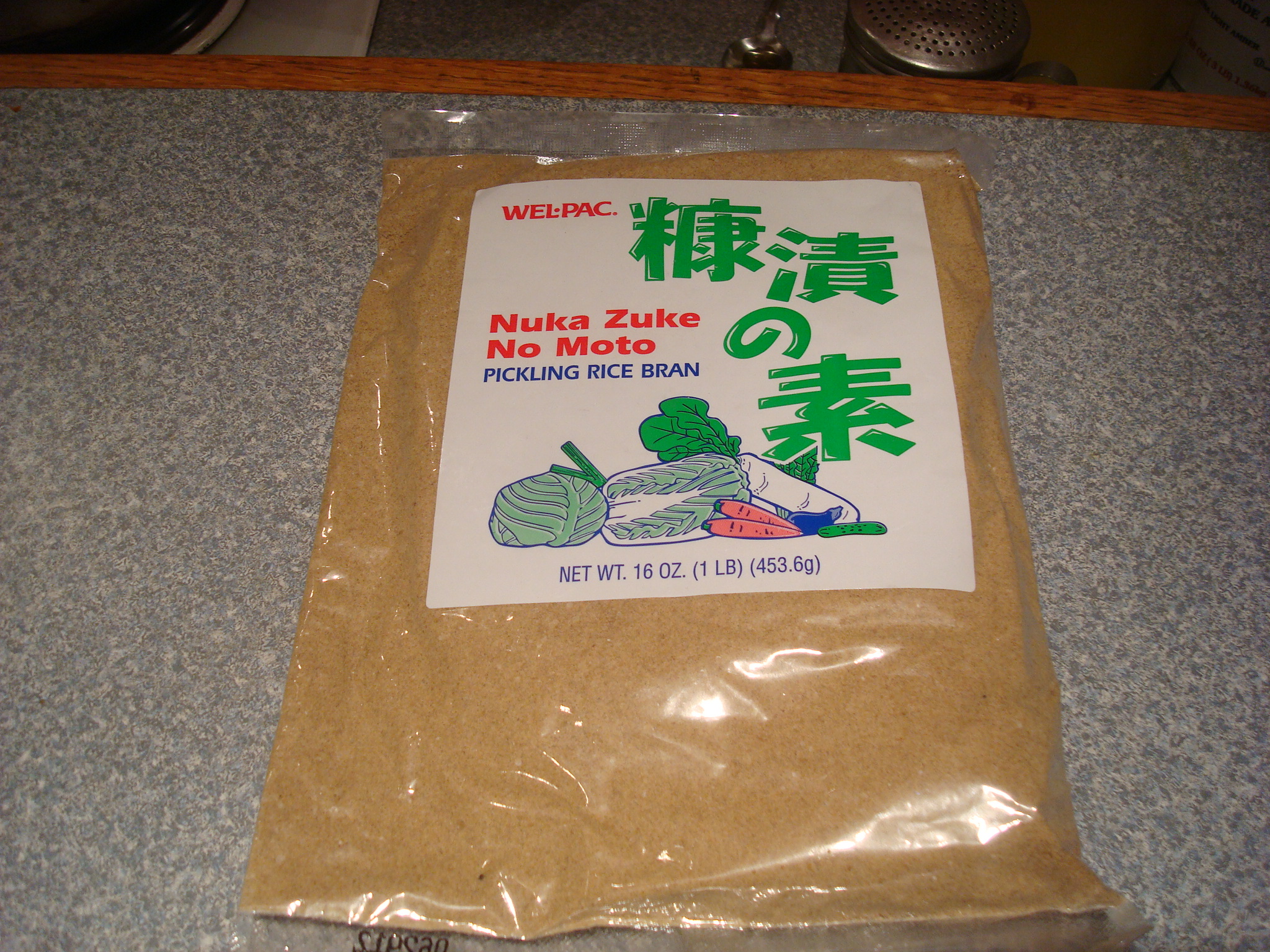
2. Roast the rice bran until slightly darkened and gives off a roasted aroma.
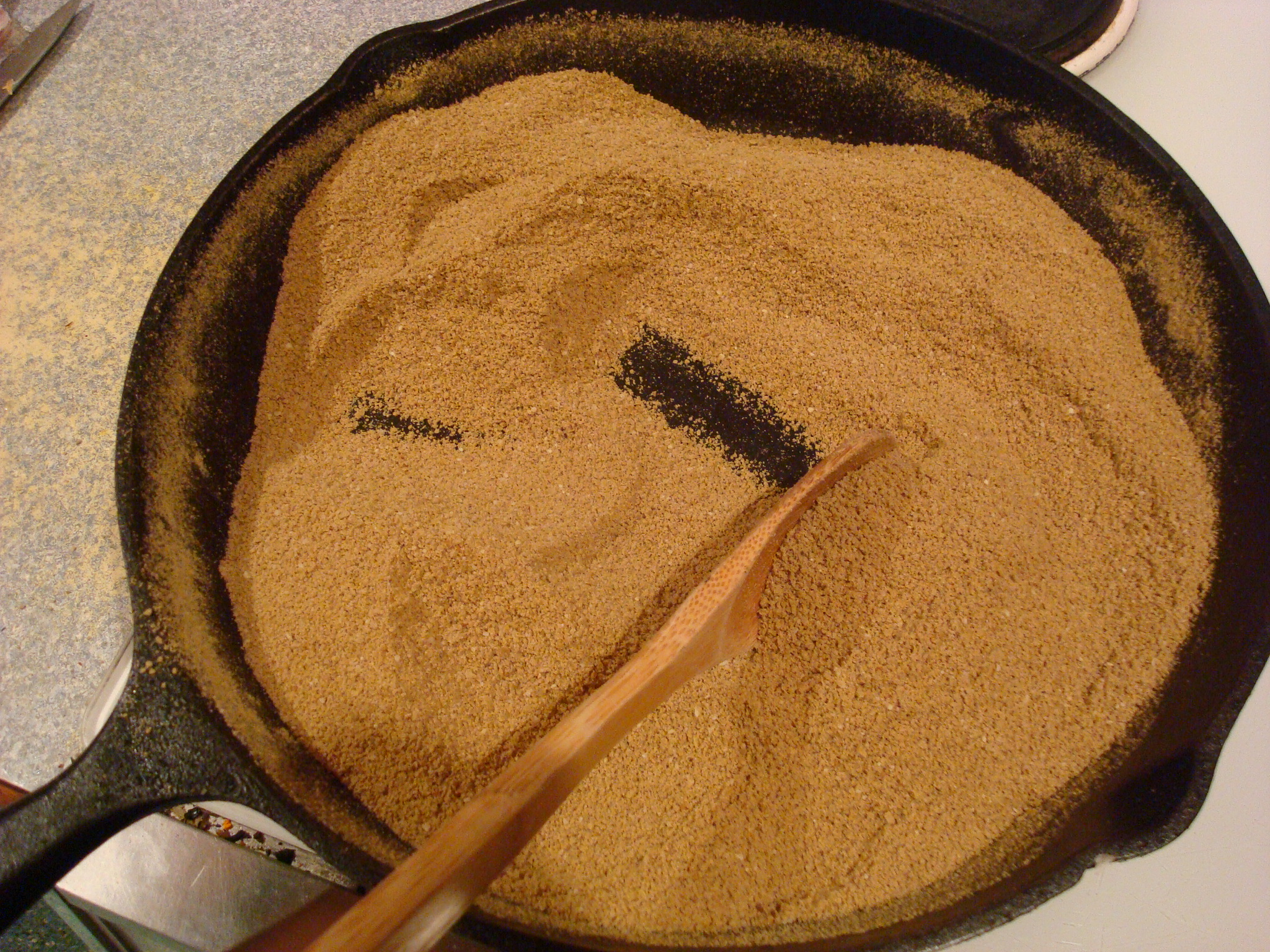
3. Make a slurry of 6 cloves of garlic and a big chuck of ginger in the cuisine art and add it to the bran. Optional: red chili peppers with seeds removed.
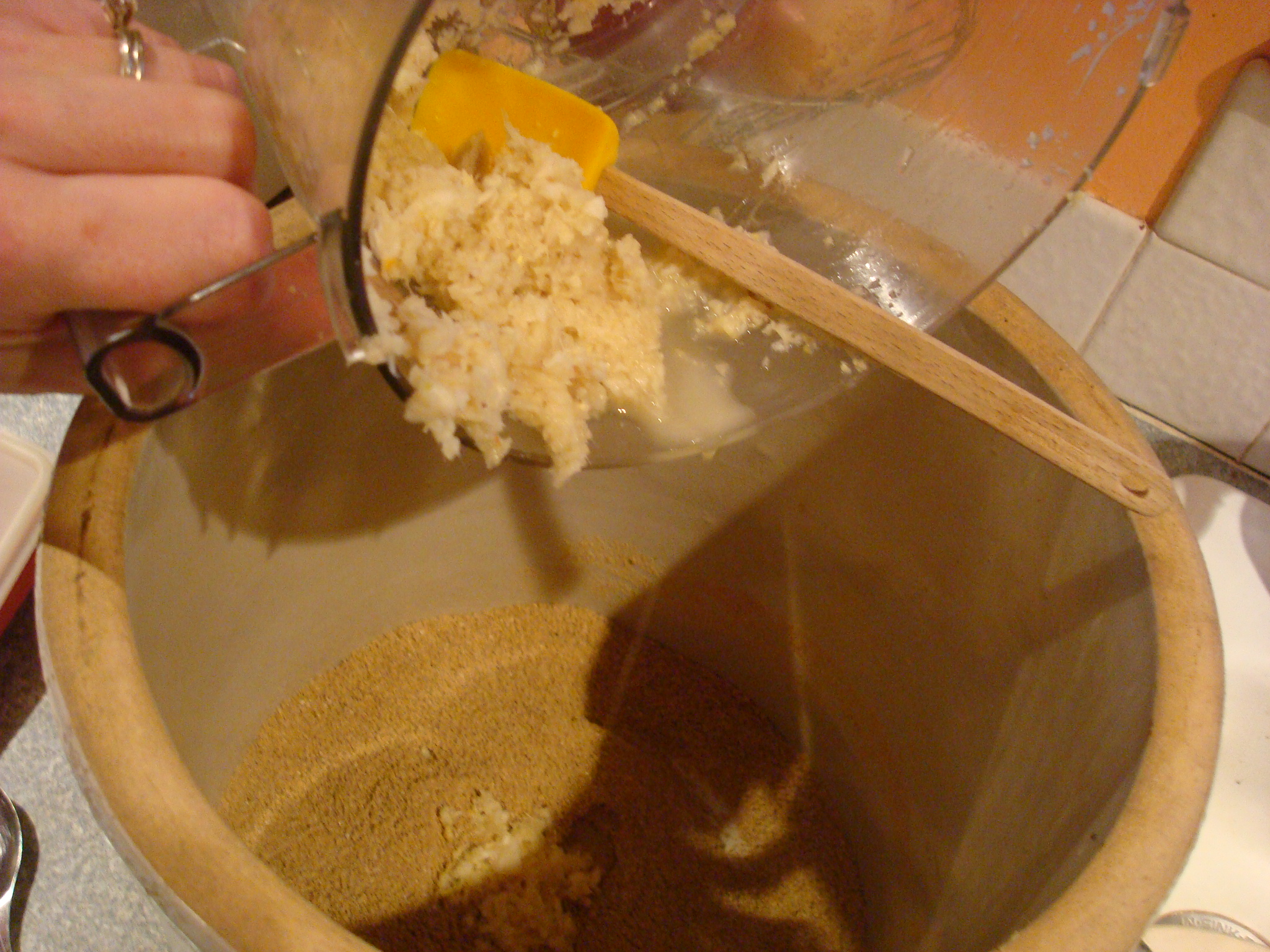
4. Add 5 – 6 Tablespoons of salt to 6 cups of boiling water. Recipes vary greatly regarding salt content. Sandor Katz reports that recipes range from 5% – 25% salt content to the weight of bran so use your judgement and taste preferences. Chop up a piece of kombu seaweed and add to salted water. Let water cool and then add salted water and kombu to rice bran until you find a consistency you like. Some people prefer a wetter mixer. I like a wet sand consistency, using only 4 1/2 cups of water.
5. I added a cup of starter from Stewart’s batch however, if you are starting your culture from scratch you can add a piece of soaked bread, crushed dried eggshells, apple peelings, beer or sake to get the ferment going. Again, recipes vary greatly as to whether you need any of these additional microbial prompts or not.
6. After washing hands, stir nuka with your hands, aerating it well. Bury a variety of different vegetables in your culture every day and remove them the next. Some people salt rub their vegetables to stimulate the breakdown of vegetables, but it is not necessary if you want less salt. Gradually, the vegetables start tasting more and more pickled.
On the fourth day I used a gnarly looking old kohlrabi that had been overwintering in my garden. I peeled and cut it into pieces, and buried both the leaves and root in the nuka pot. Vegetables can be put in whole or sliced in the pot.
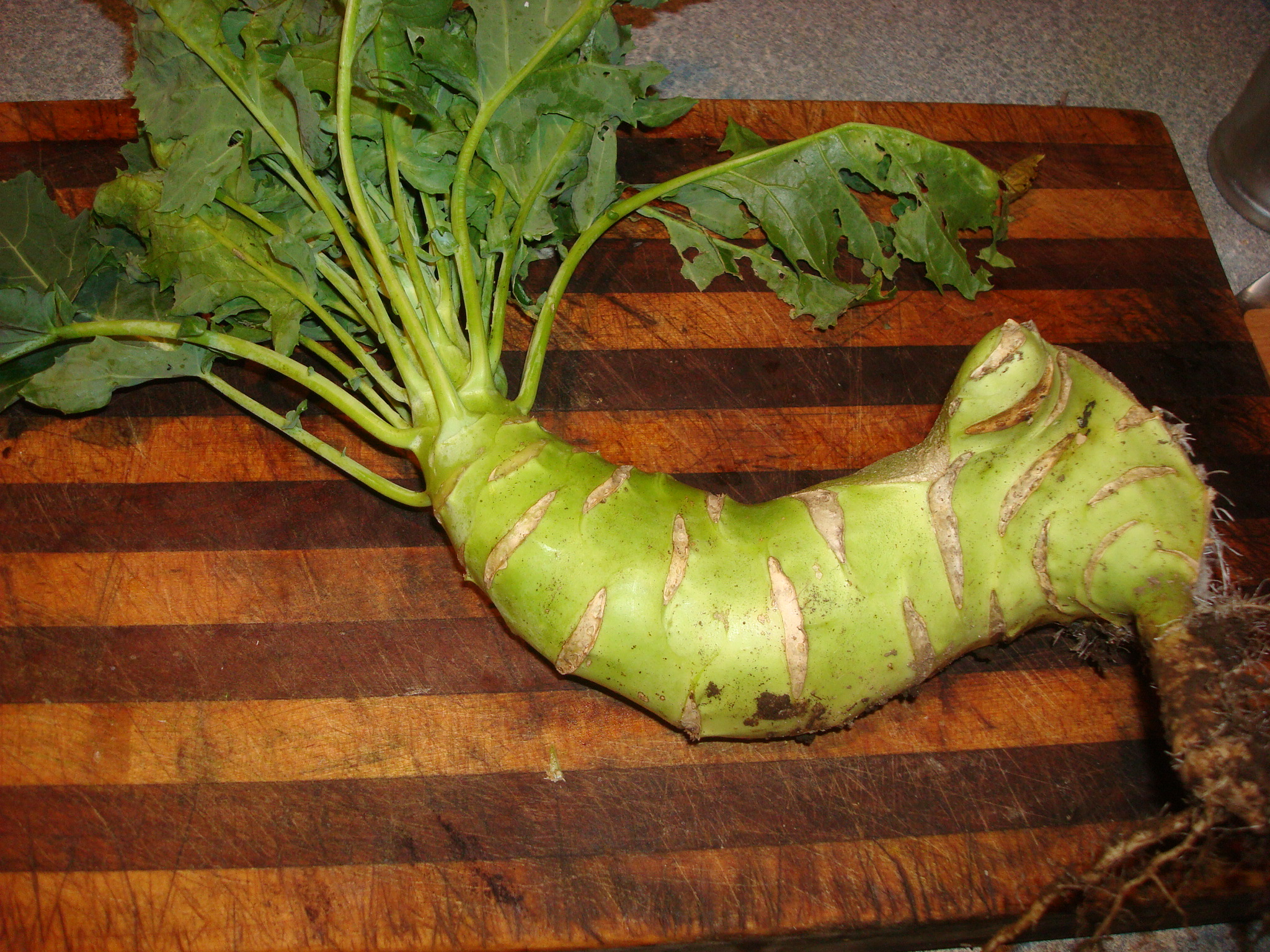
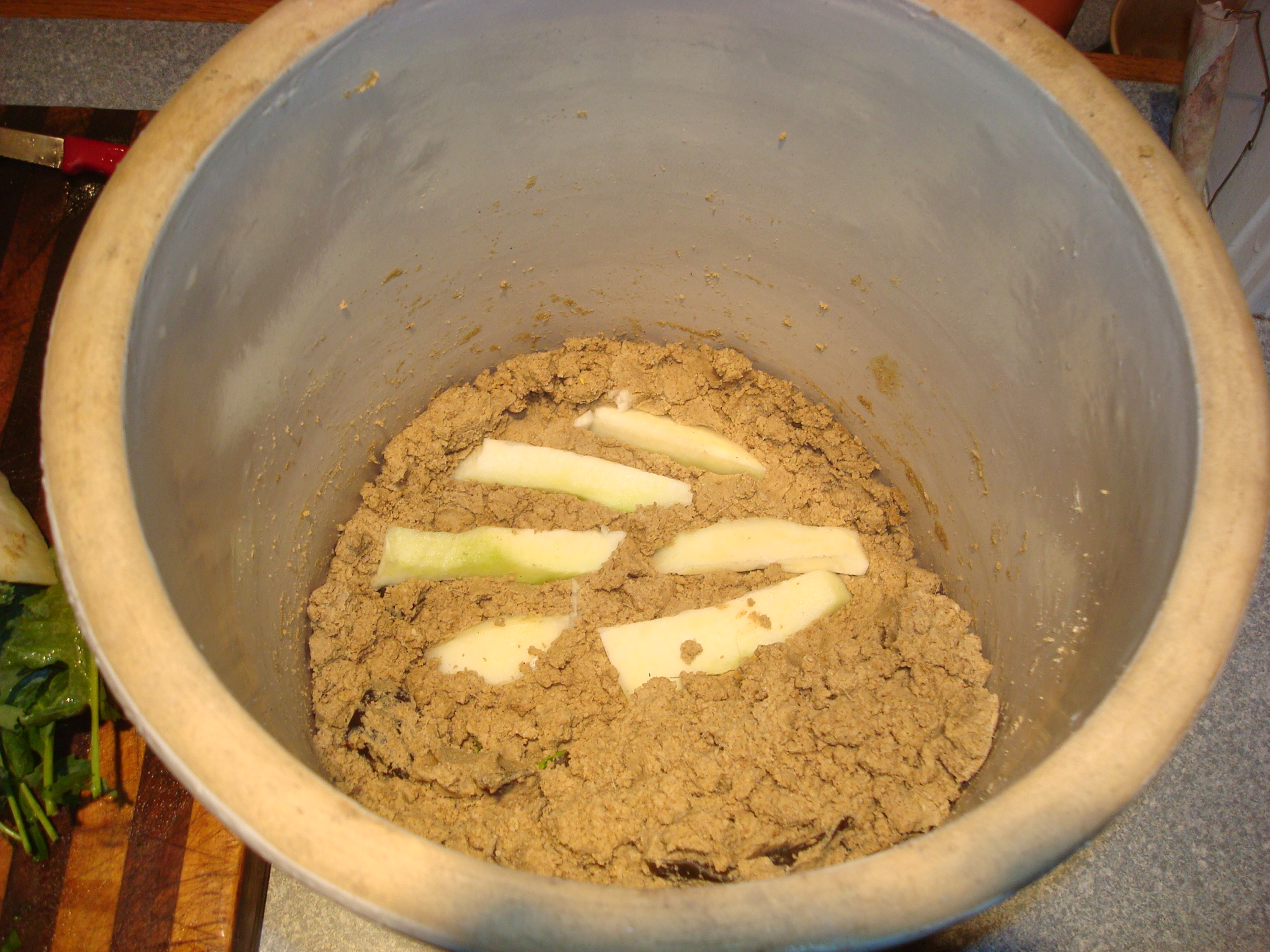
7. Wipe away any residual bran from the sides of the vessel and pat surface down smooth after covering vegetables.
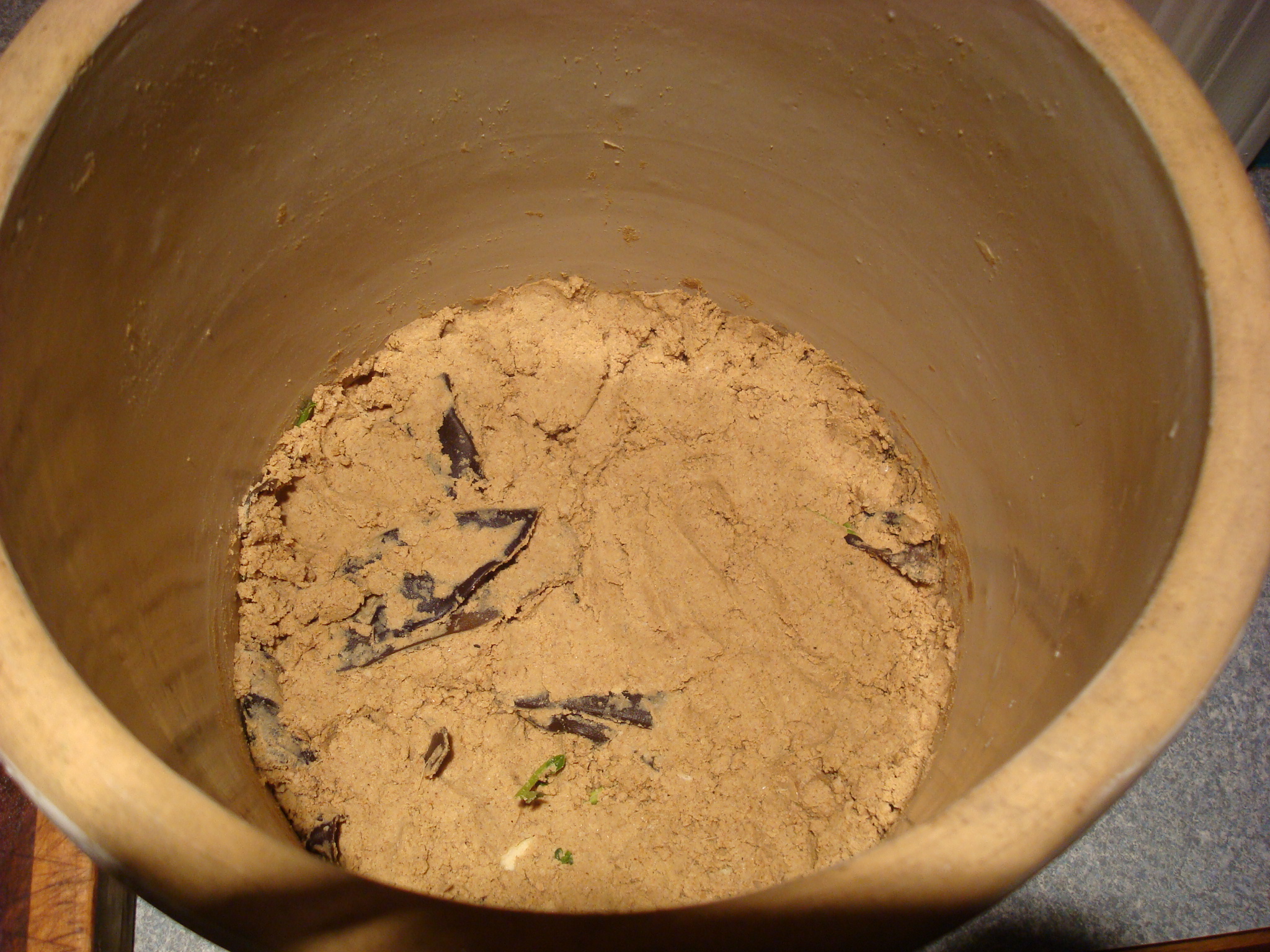
8. Cover pot with a clean cloth and use an rubber band to bind it.
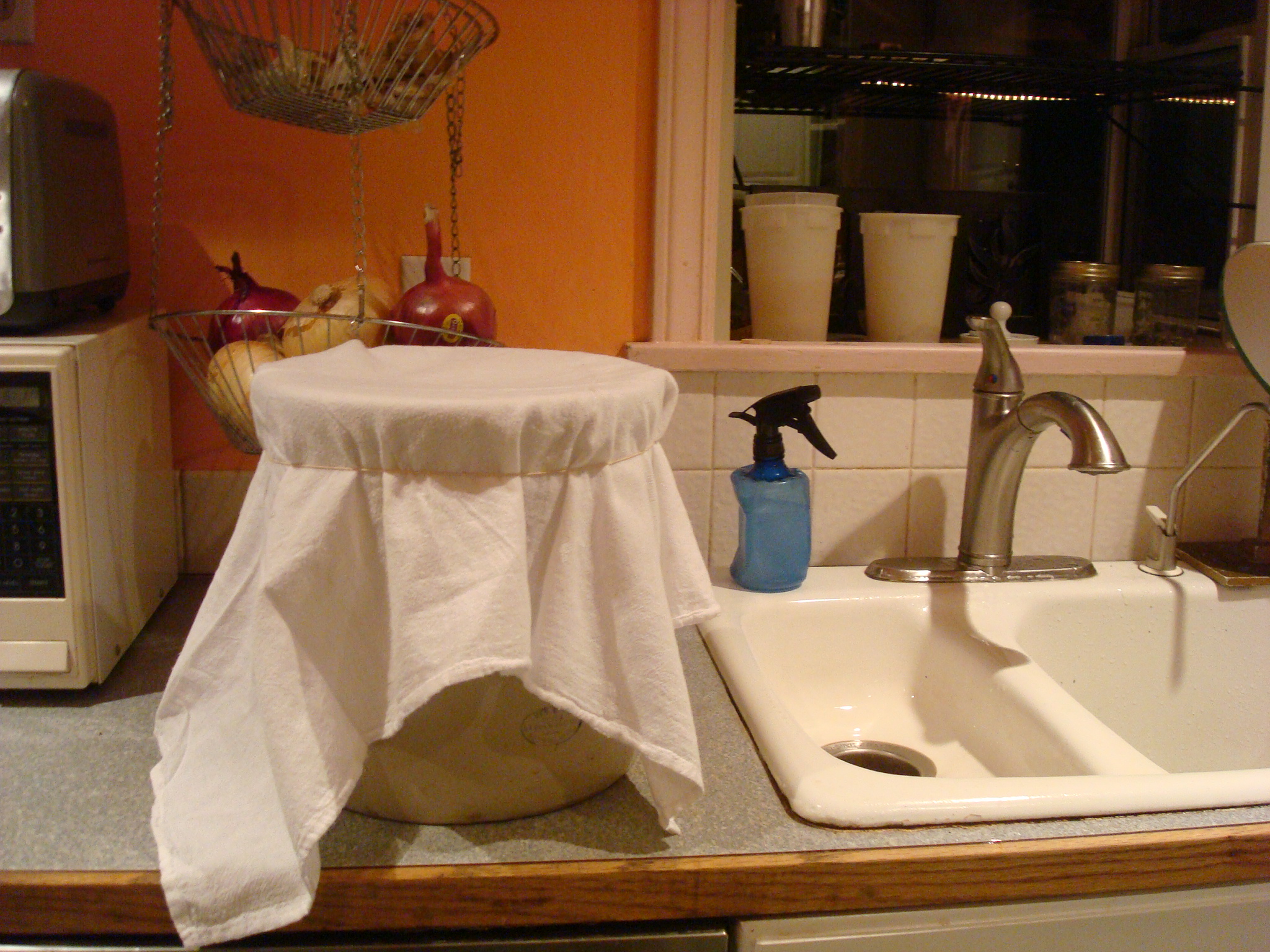
9. The next day, remove the vegetables from the nuka pot, wipe off excess nukazuke paste into the pot. Wash off vegetables with cool water. Occassionally add more rice bran and salt to your pot.
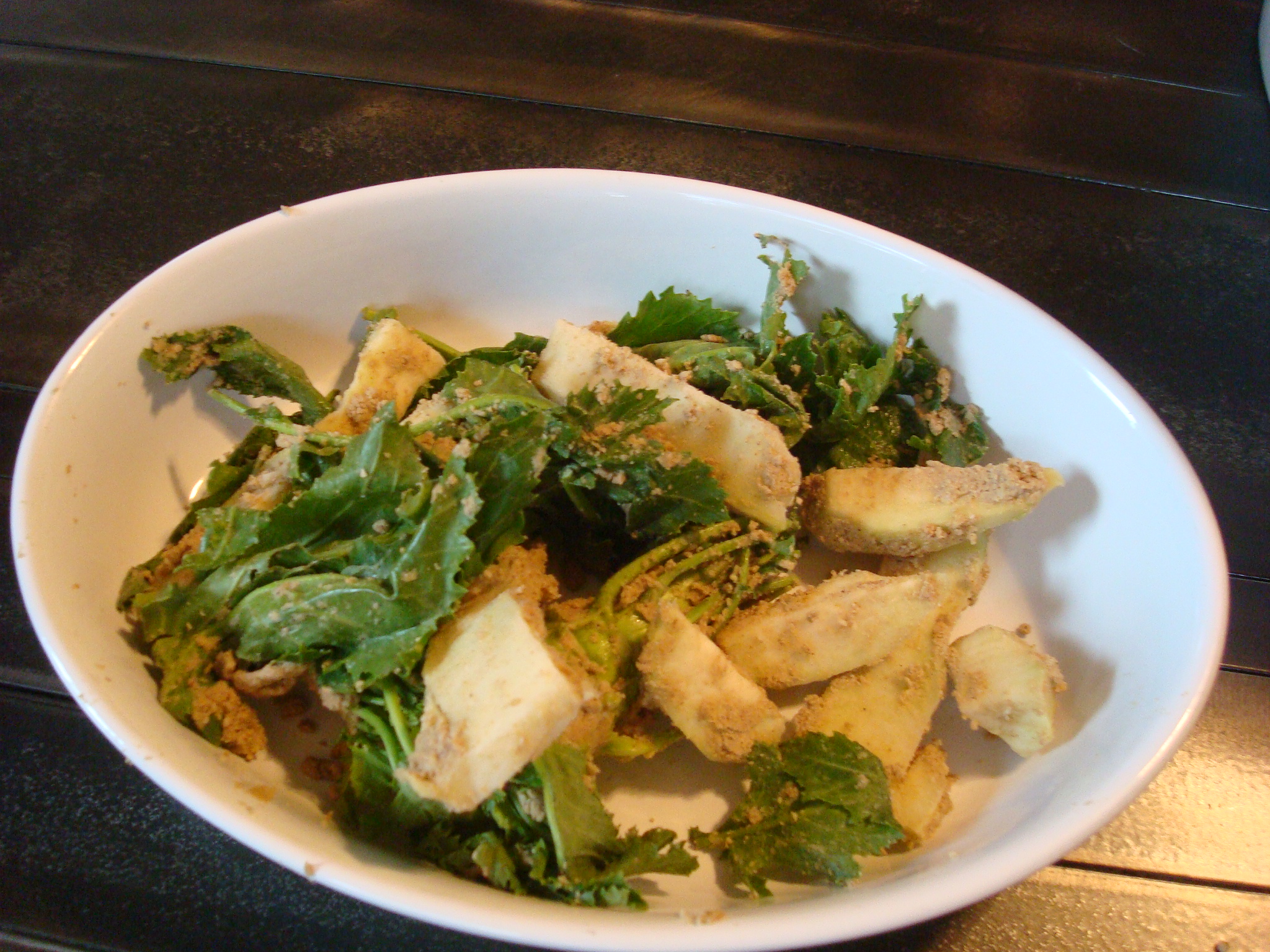
Enjoy the nuanced taste of your nukazuke pickle as an appetizer or an ingredient in a salad.
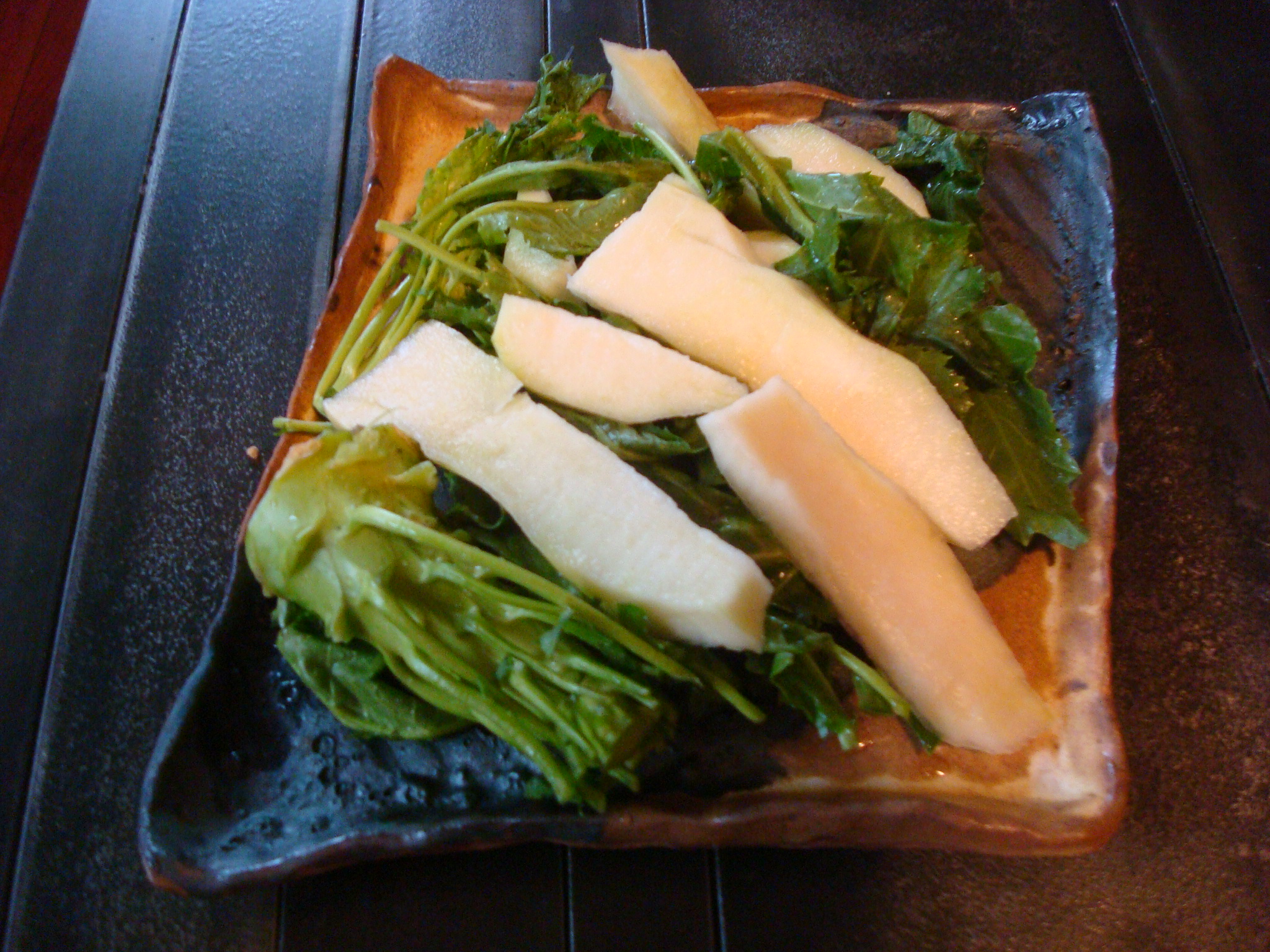
I look forward to the taste sensations my buried treasure brings me each day. I’ve tried cauliflower, red pepper, bok choi, daikon radish, red radish and celery. According to Craig, they have all been, “painfully good.” Traditionally, eggplant, cucumber and cabbage are pickled. If you start a nuka pot, please share your experiments with me.
